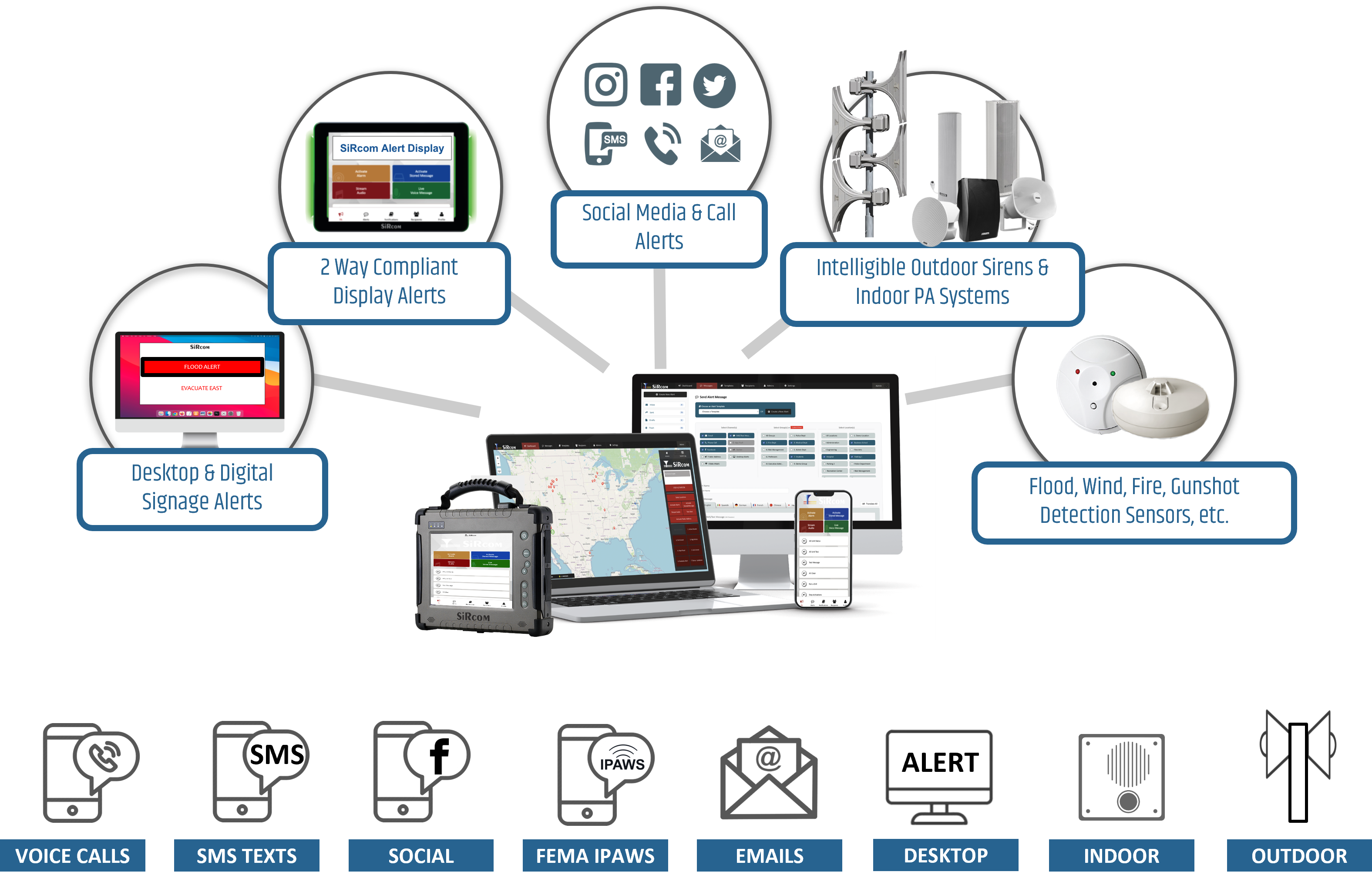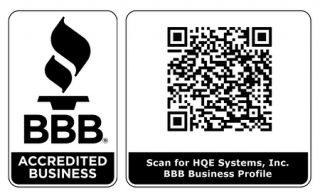Navigating The Journey Of Emergency Mass Notification From Origins To Cutting-Edge Significance!
A Journey into the Core of Emergency Mass Notifications:
In an unpredictable world, where seconds can mean the difference between safety and catastrophe, emergency mass notification systems stand as our vigilant guardians. Imagine the heartbeats that quicken at the sound of a siren, or the rush of relief when a timely alert on a phone prevents a potential disaster. These systems, which have evolved from simple bells in town squares to sophisticated digital alerts, are the unsung heroes in our daily lives. Their transformation over the years isn’t just a testament to technological progress; it’s a reflection of society’s unwavering commitment to protect its own. As cities pulse with life and our world becomes a tightly-knit web of interactions, the challenges of ensuring every individual’s safety have magnified. Yet, with every challenge comes innovation. The fusion of cutting-edge technology with the age-old instinct to safeguard has given birth to notification systems that are swift, precise, and far-reaching. From the echoing wail of sirens that pierce the silence to the soft ping of a text message, these alerts are our first line of defense against unforeseen threats. But beyond technology lies the heart of these systems: the collective will of communities, tech pioneers, and leaders who work tirelessly to ensure that no one is left in the dark when danger looms. Their collaborative spirit and dedication are what drive these systems to be more intuitive, inclusive, and attuned to the diverse challenges of modern living. In essence, emergency mass notification systems are more than just tools; they are the embodiment of humanity’s enduring spirit to watch over, care for, and protect its members. In the face of adversity, they remind us that we are not alone, and that together, we can overcome any challenge.
The History of Emergency Mass Notification:
The concept of mass notification has deep historical roots, stretching back to the dawn of human civilization. In these early communities, where survival often depended on collective action and mutual cooperation, the ability to disseminate crucial information rapidly was of utmost importance. Whether it was to warn of an approaching predator, signal the discovery of a water source, or call for a communal gathering, the mechanisms for communication had to be clear, immediate, and far-reaching.
Before the advent of modern technology, these ancient societies employed a variety of innovative methods to achieve this. Large bonfires were lit on hilltops, serving as beacons visible for miles around, conveying messages of distress or celebration. Drums, with their deep and resonant sounds, were used in some cultures to send coded messages across vast distances, their rhythmic beats echoing through dense forests and open plains. In coastal regions, conch shells were blown to alert inhabitants of incoming storms or approaching vessels. Even the simple act of shouting in relay, where one person’s message was passed on by another until it reached its destination, was an early form of mass communication.
These rudimentary methods, while limited by today’s standards, were effective in their time and context. They underscored the universal human need to stay connected, to be informed, and to act as a cohesive unit, especially when faced with challenges. The essence of these early communication systems laid the foundation for the sophisticated emergency mass notification systems we have today, reminding us of the timeless importance of staying connected and informed.
Ancient Civilizations:
In ancient Rome, for instance, watchtowers were strategically placed throughout the city. When a threat was detected, fires were lit atop these towers, creating a chain reaction that signaled danger. Similarly, in ancient China, large drums and gongs were used to alert communities of potential threats or to gather people for important announcements.

Medieval Times:
Fast forward to medieval Europe, where church bells played a crucial role. These bells, which were initially intended for religious purposes, soon took on a dual function. They were rung not only to call the faithful to prayer but also to alert townsfolk of fires, invasions, or other emergencies.

The Telegraph Era:
The 19th century saw a significant leap in communication with the invention of the telegraph. This device allowed messages to be sent over long distances in mere minutes. It revolutionized how information, including emergency alerts, was shared between cities and even countries.

Radio and Television:
The 20th century brought with it the age of broadcast. Radios became household staples, and with them came the ability to reach a vast audience instantaneously. Emergency broadcast systems were established, allowing governments to interrupt regular programming and deliver urgent messages. Television further enhanced this capability, adding a visual element to emergency alerts.

Technological Advancements in Emergency Mass Notification:
Building on the rich tapestry of emergency mass notifications, the dawn of the technological age brought with it groundbreaking innovations that revolutionized crisis communication. While our ancestors depended on tactile and audible signals like bells, drums, and even smoke signals, and subsequent generations harnessed the capabilities of telegraphs and radio waves, today’s world is dominated by a plethora of digital platforms. This digital transformation, fueled by relentless technological advancements, has not only broadened the scope of these notification systems but has also fine-tuned their accuracy and speed. Today, with just a click or a swipe, alerts can be sent to millions within seconds, transcending geographical boundaries and time zones. This digital leap has also allowed for more personalized and targeted notifications, ensuring that the right message reaches the right audience without delay. Such advancements underscore the remarkable journey of emergency mass notifications, from primitive drums in ancient villages to sophisticated algorithms in modern metropolises. As we reflect on this evolution, it’s evident that while the mediums have changed, the underlying principle remains the same: the unwavering commitment to safeguarding communities and ensuring that every individual is informed, prepared, and protected in times of crisis.
Digital Age:
The late 20th and early 21st centuries saw the rise of the internet and smartphones. These technologies have transformed emergency notifications. Today, alerts can be sent directly to individuals’ phones, computers, or other devices. Systems can target specific geographic areas, ensuring that only those in danger are alerted. For instance, Amber Alerts for missing children or weather apps warning of local severe conditions.
Mobile Connectivity Takes Center Stage: The proliferation of mobile phones in the 21st century transformed emergency notifications. SMS became a primary mode of alert, given its instant delivery and high read rate. Additionally, the development of smartphone apps meant that organizations could send push notifications directly to individuals, ensuring immediate attention.
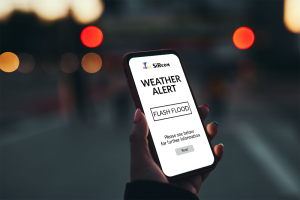
Geo-Targeting and Personalization: Advanced systems began utilizing GPS technology, allowing for alerts to be sent based on precise geographic locations. This ensured that notifications were highly relevant, reducing unnecessary panic and alert fatigue. For instance, a person in a flood-prone area would receive timely warnings, while someone in a safe zone wouldn’t be unnecessarily alarmed.
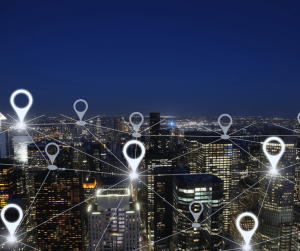
Integration with Social Media: The rise of platforms like Twitter, Facebook, and Instagram provided another channel for mass notification. Given their vast user bases and real-time nature, these platforms became invaluable tools for disseminating information quickly.

Harnessing Artificial Intelligence: The latest advancements in emergency notification systems involve the use of AI. These systems can analyze vast amounts of data, recognize patterns, and even predict potential threats. Machine learning algorithms can determine the best methods and times to send alerts, ensuring maximum effectiveness.

Multimodal Notification: Recognizing the diverse communication preferences of the public, modern systems send alerts across multiple platforms, from emails and SMS to app notifications and social media posts. This multi-channel approach guarantees that alerts reach the widest audience possible.
Interactivity and Feedback Loops: Gone are the days when mass notification was a one-way street. Today’s systems facilitate two-way communication, allowing recipients to provide feedback, confirm receipt of a message, or even request assistance.
Integration with Infrastructure:
Modern cities have also integrated emergency alerts into their infrastructure. For example, in some metropolitan areas, electronic billboards on highways can display urgent messages about accidents, road closures, or other emergencies.
In reflecting on this history, it’s evident that while the methods have evolved, the core principle of emergency mass notification remains unchanged: to provide timely and accurate information to as many people as possible, ensuring their safety and well-being. The journey from ancient drums to today’s sophisticated digital systems underscores humanity’s enduring commitment to community safety and the innovative spirit that drives progress.

HQE’s Advanced Emergency Early Warning Solution
The evolution of emergency communication systems is a testament to humanity’s relentless pursuit of safety and technological advancement. From the rudimentary alert systems of ancient civilizations, which relied on bells and drums, to today’s sophisticated digital platforms, the journey has been both transformational and enlightening. As we delve deeper into the historical context of mass notifications, it becomes evident that the modern era demands solutions that are not just technologically superior but also versatile, adaptable, and secure. HQE Systems, Inc. emerges as a beacon in this landscape, epitomizing the perfect blend of tradition and innovation in its approach to emergency notifications.
At the heart of HQE’s technological arsenal is the SMART electronic mass notifications (EMNS) software. This state-of-the-art command and control software is a culmination of years of research, development, and an intrinsic understanding of the multifaceted needs of contemporary society. Infused with the power of machine learning and artificial intelligence, the SMART EMNS software is designed to provide real-time, precise, and contextually relevant alerts. This ensures that recipients are not only informed but are also equipped to take proactive measures during emergencies.
In today’s digital age, where data breaches and cyber threats loom large, the importance of security cannot be overstated. HQE’s unwavering commitment to this principle is evident in its adoption of military-grade protocols. Every piece of information, every alert, and every communication transmitted through HQE’s systems undergoes rigorous encryption processes, ensuring utmost confidentiality and engendering trust among its users.

However, the brilliance of HQE’s solutions isn’t confined to indoor environments. Their comprehensive product suite is meticulously crafted to cater to a plethora of settings. Whether it’s the dynamic ambiance of corporate high-rises or the tranquil environs of challenging terrains, HQE ensures that its intelligible acoustic alerts resonate loud and clear. The outdoor solutions, fortified with robust high-powered siren arrays, are engineered to span vast terrains, guaranteeing that no individual remains uninformed during pivotal moments.
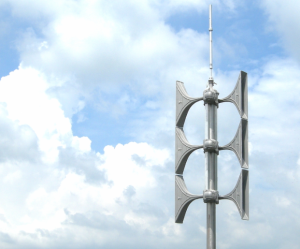
Diving deeper into HQE’s innovative offerings, one can’t help but marvel at the diversity and specialization of its products. The seamless integration with FEMA IPAWS Alerts, the convenience and immediacy of mobile app push notifications, the enhanced security layer offered by personal wearable panic buttons, and the rapid response facilitated by wall-mounted digital alert tablets are just a few examples of HQE’s forward-thinking approach.
One of the standout features of HQE’s strategy is its emphasis on sustainability and seamless integration. In a world where technological obsolescence is a real concern, and organizations grapple with the challenges of integrating new systems with legacy infrastructure, HQE offers a breath of fresh air. Their solutions are designed to dovetail with pre-existing systems, ensuring a smooth transition. This not only obviates the need for overhauling entire systems but also translates into significant cost savings for clients.
Furthermore, HQE’s impressive clientele, spanning over 1,000 satisfied customers globally, is a ringing endorsement of its reliability, expertise, and commitment to excellence. Collaborative endeavors with stalwarts like the Department of Defense (DoD) and a myriad of governmental agencies underscore HQE’s credentials as an industry trailblazer.
But what truly sets HQE apart is its holistic understanding of the emergency communication ecosystem. Recognizing that each organization, each setting, and each individual has unique communication needs, HQE’s solutions are tailor-made to cater to these specific requirements. Whether it’s a school district, a military installation, or a sprawling corporate campus, HQE’s systems are adaptable, scalable, and, most importantly, effective.
In addition, HQE’s focus on continuous improvement and innovation ensures that its clients always have access to the latest and best in emergency communication technology. Regular software updates, integration with emerging technologies, and feedback-driven enhancements are integral components of HQE’s service ethos.
Conclusion:
The journey of emergency mass notification systems, from their humble beginnings to their current state-of-the-art incarnations, paints a vivid picture of humanity’s relentless pursuit of safety and well-being. It’s a testament to our collective resilience, innovation, and the unwavering belief that technology, when harnessed correctly, can be a force for good. In a world that often feels unpredictable, these systems stand as pillars of certainty, ensuring that when danger looms, we are not caught off guard.
As we reflect on the past, it’s evident that the challenges faced by societies have always been multifaceted. Natural disasters, civil unrest, technological mishaps, and more recently, war, and terrorism, have underscored the need for swift, accurate, and widespread communication. The stakes are high. Every second counts. And in these crucial moments, the difference between chaos and coordinated response often hinges on the effectiveness of our communication tools.
Enter companies like HQE, which have recognized this pressing need and risen to the occasion. Their dedication to crafting solutions that are not only technologically advanced but also user-centric is commendable. It’s not just about sending out alerts; it’s about ensuring those alerts reach the right people, at the right time, with the right information. This precision, combined with the breadth of their reach, ensures that whether it’s a school in the heart of a bustling city or a remote military installation, everyone is within the protective embrace of their systems.
In wrapping up, it’s essential to recognize that while technology plays a pivotal role in emergency response, the human element remains irreplaceable. It’s the collaboration between tech innovators, emergency responders, community leaders, and the public that makes these systems truly effective. As we move forward, it’s this spirit of collaboration, combined with technological advancements, that will guide our path.
The evolution of emergency mass notification systems is not just a tale of technological progress; it’s a reflection of our society’s values, priorities, and aspirations. It’s a story of hope, resilience, and the indomitable human spirit. And as we stand on the cusp of a future filled with possibilities, one thing is clear: come what may, we are ready. Ready to face challenges, ready to adapt, and most importantly, ready to protect and preserve the sanctity of human life and community.
HQE Systems is a certified Veteran Owned Company. For more information about HQE Systems Inc. and its emergency management, electronic security, and integration solutions, please visit www.hqesystems.com.

Contact: David Ditto (Early Warning Systems Subject Matter Expert)
Email: David.Ditto@hqesystems.com
Phone Number: (843) 872-7020
____________________
HQE Systems, Inc. | HQE is a Minority-Owned Service Disabled Veteran Owned Small Business (SDVOSB) providing full solutions for: Mass Notification Systems, Electronic Security Systems, Software Development Services, Contract Support, and Prototyping Services. As a brand-agnostic solutions provider, HQE prides itself in providing the BEST solution for the project. HQE possesses over 30+ factory certifications and reseller licenses to ensure our clients receive the highest quality service at the ideal budget. HQE can provide full design, installation, integrations, upgrades, and long-term maintenance support for any size and scope project.

